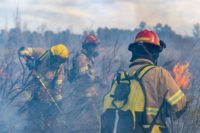Painting is common across many manufacturing facilities and doesn’t appear to be particularly dangerous on the surface. Despite all appearances, workers in these areas may encounter more health hazards than they realize.
Since the practice isn’t as overtly hazardous as those dealing with heavy machinery, crucial safety considerations may also go overlooked. Here’s a closer look at the health risks paint fumes pose and how to mitigate them.
Carcinogens and other toxins
The most prominent health risk associated with paint fumes is the presence of carcinogens, chemicals that can cause cancer. For example, some paints contain benzene, a quickly evaporating liquid that causes leukemia. Manufacturing workers spending long hours around paint containing benzene may breathe it in, putting them at risk of cancer.
Apart from carcinogens, many paints contain other volatile organic compounds (VOCs). Toluene, acetone and formaldehyde are commonly used as solvents, sometimes even as the primary liquid. Breathing in these compounds can cause damage to the liver, kidneys and central nervous system, especially over long-term exposure.
Since painting processes in manufacturing are typically contained, indoor operations, the risks of inhaling these toxins are higher. The Environmental Protection Agency (EPA) says VOC concentrations are up to 10 times higher indoors than outdoors. Staying in these areas for extended periods could put workers at significant risk of inhaling these dangerous compounds.
Allergies and asthma
Employees who have allergies to certain chemicals could be at even greater risk. Many common compounds in industrial paints can trigger reactions, which could be dangerous depending on the severity of workers’ allergies. Even people without strong allergies could develop responses to some VOCs with enough exposure.
For example, studies have found that high formaldehyde levels after painting can cause hyper-responsiveness in the lungs, making them more sensitive to airborne contaminants. If employees develop this and keep working, they could start to react to airborne VOCs more dramatically. They could have trouble breathing, even to the point of a medical emergency.
These concerns are even greater with people who have asthma. Chemicals like formaldehyde and acetaldehyde, a common paint binder, can trigger asthma attacks, resulting in severe consequences. Some studies even suggest that exposure to these compounds could lead to the development of asthma or allergies.
Short-term health problems
In addition to these more severe issues, paint fumes can cause several short-term health problems. These may not endanger workers but still cause discomfort and injury. Even if employees can work through these issues, they could hamper their performance and affect their overall health.
The most common short-term side effects of VOC exposure are eye, nose and throat irritation. If these persist, they could lead to trouble breathing. Similar common side effects include headaches, nausea and feeling lightheaded.
Less common but still possible short-term health issues include allergic skin reactions, fatigue, dizziness and vomiting. If workers are around paint fumes over extended periods without proper protection, these side effects may be more likely.
How to minimize paint fume hazards
While the health risks associated with paint fumes are concerning, they’re avoidable. Manufacturers can take many steps to ensure their workers don’t suffer any side effects from working with paints. Here are a few of the most important precautions to follow.
By far, the most crucial safety consideration with industrial paints is to ensure proper ventilation. OSHA recommends workplaces use HVAC system filters with a minimum efficiency reporting value of 13 or higher to remove contaminants. Ventilation systems should also pull air in from outside, far from the building’s exhaust, to prevent recirculating any airborne VOCs.
Manufacturers should also require all workers in painting operations to wear protective gear, including face masks and eye protection. N95 respirators and other close-fitting, heavily filtered masks should be the standard. Safety goggles should likewise fit tightly to avoid smaller particles from slipping in. Painters should also wear coveralls and gloves to prevent skin exposure.
Some manufacturers may consider using powder coating instead of traditional paints. Polymer powder is inert and free of toxins, making it safer to work with. Workers using polymer coatings should still follow safety precautions like ensuring ventilation and wearing protective gear.
Alternatively, manufacturers may choose to work with VOC-free paint. Water-based paints contain fewer or no VOCs, making them safer, although they may not perform the same. It’s also important to note that VOC-free paint still emits chemical gases, so other precautions are necessary.
Keep workers safe from paint fumes
When manufacturers understand what risks paint fumes pose, they can mitigate them more effectively. Facilities can keep workers safe from paint-related hazards by following these steps. While these risks may not be as apparent as others, they can still be dangerous, so they deserve attention.









